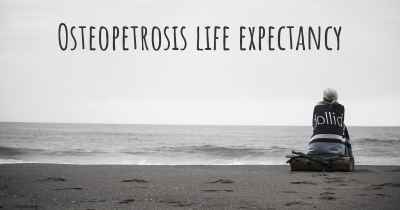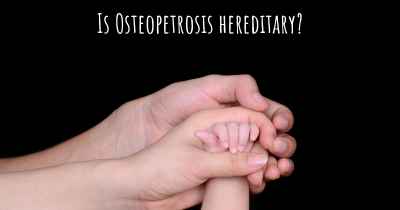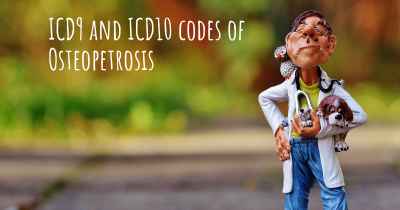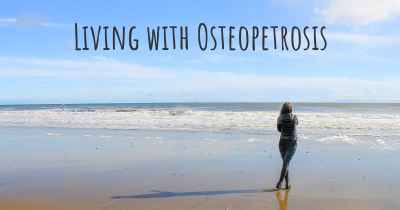Which are the symptoms of Osteopetrosis?
See the worst symptoms of affected by Osteopetrosis here

Osteopetrosis, also known as marble bone disease or Albers-Schönberg disease, is a rare genetic disorder characterized by abnormal bone development. It is caused by a defect in the osteoclasts, the cells responsible for breaking down old bone tissue and replacing it with new bone. As a result, the bones become excessively dense and brittle, resembling marble.
Symptoms:
The symptoms of osteopetrosis can vary widely depending on the severity and type of the disease. There are several forms of osteopetrosis, including autosomal dominant, autosomal recessive, and intermediate forms. Here are some common symptoms associated with osteopetrosis:
- Fractures: Due to the increased bone density and brittleness, individuals with osteopetrosis are prone to fractures. Even minor injuries can lead to bone fractures.
- Delayed growth: Children with osteopetrosis may experience delayed growth and development. This can result in short stature and delayed milestones.
- Anemia: Osteopetrosis can cause anemia, a condition characterized by a low red blood cell count. Anemia can lead to fatigue, weakness, and pale skin.
- Visual impairments: In some cases, osteopetrosis can affect the optic nerve, leading to vision problems such as nearsightedness, farsightedness, or even blindness.
- Hearing loss: The abnormal bone growth can also affect the structures of the inner ear, resulting in hearing loss. This can range from mild to severe and may require hearing aids or other interventions.
- Dental abnormalities: Osteopetrosis can cause dental problems, including delayed tooth eruption, overcrowding, and misalignment of teeth.
- Recurrent infections: Individuals with osteopetrosis may have a weakened immune system, making them more susceptible to infections. This can include frequent respiratory infections, urinary tract infections, and bone infections.
- Neurological symptoms: In some cases, osteopetrosis can affect the central nervous system, leading to neurological symptoms such as seizures, developmental delays, and intellectual disabilities.
It's important to note that the severity and progression of symptoms can vary greatly among individuals with osteopetrosis. Some individuals may have mild symptoms and lead relatively normal lives, while others may experience more severe complications.
Treatment:
Currently, there is no cure for osteopetrosis. Treatment aims to manage the symptoms and complications associated with the disease. This may include:
- Fracture management: Prompt treatment of fractures to promote healing and prevent further complications.
- Hematopoietic stem cell transplantation (HSCT): In severe cases, HSCT may be considered to replace the defective bone marrow cells with healthy ones. This procedure can help improve bone marrow function and reduce the severity of symptoms.
- Hearing aids and visual aids: Assistive devices can help individuals with hearing or vision impairments to improve their quality of life.
- Infection management: Proactive measures to prevent and treat infections, including the use of antibiotics and regular vaccinations.
- Dental care: Regular dental check-ups and interventions to address dental abnormalities and maintain oral health.
- Supportive care: Physical therapy, occupational therapy, and other supportive interventions can help manage symptoms and improve overall functioning.
It is crucial for individuals with osteopetrosis to receive ongoing medical care and support from a multidisciplinary team of healthcare professionals. Regular monitoring and early intervention can help minimize complications and improve the quality of life for those affected by this rare genetic disorder.
Posted May 17, 2017 by María Ximena 1071
Posted May 17, 2017 by lorirdavis 1452
Posted Jul 26, 2017 by Chuck 2001
Posted Jul 30, 2017 by Karen 1160
Posted Sep 10, 2017 by Amber 200
Posted Sep 28, 2017 by Mary 2550
Fatigue, muscle aches, difficulty in swallowing.
If you could give more mobility to those who are losing there.
Posted Sep 12, 2017 by Paula 2500








